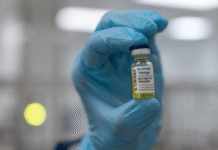Breakthrough technology advances research of vascular diseases like diabetes
SCIENTISTS have managed to grow perfect human blood vessels as organoids in a Petri dish for the first time.
The breakthrough engineering technology, outlined in a new study published recently in Nature, dramatically advances research of vascular diseases like diabetes, identifying a key pathway to potentially prevent changes to blood vessels — a major cause of death and morbidity among those with diabetes.
An organoid is a three-dimensional structure grown from stem cells that mimics an organ and can be used to study aspects of that organ in a Petri dish.
“Being able to build human blood vessels as organoids from stem cells is a game changer,” said the study’s senior author Josef Penninger, the Canada 150 Research Chair in Functional Genetics, director of the Life Sciences Institute at UBC and founding director of the Institute for Molecular Biotechnology of the Austrian Academy of Sciences (IMBA).
“Every single organ in our body is linked with the circulatory system. This could potentially allow researchers to unravel the causes and treatments for a variety of vascular diseases, from Alzheimer’s disease, cardiovascular diseases, wound healing problems, stroke, cancer and, of course, diabetes.”
Diabetes affects an estimated 420 million people worldwide. Many diabetic symptoms are the result of changes in blood vessels that result in impaired blood circulation and oxygen supply of tissues. Despite its prevalence, very little is known about the vascular changes arising from diabetes. This limitation has slowed the development of much-needed treatment.
To tackle this problem, Penninger and his colleagues developed a groundbreaking model: three-dimensional human blood vessel organoids grown in a Petri dish. These so-called “vascular organoids” can be cultivated using stem cells in the lab, strikingly mimicking the structure and function of real human blood vessels.
When researchers transplanted the blood vessel organoids into mice, they found that they developed into perfectly functional human blood vessels including arteries and capillaries. The discovery illustrates that it is possible to not only engineer blood vessel organoids from human stem cells in a dish, but also to grow a functional human vascular system in another species.
“What is so exciting about our work is that we were successful in making real human blood vessels out of stem cells,” said Reiner Wimmer, the study’s first author and a postdoctoral research fellow at IMBA.
“Our organoids resemble human capillaries to a great extent, even on a molecular level, and we can now use them to study blood vessel diseases directly on human tissue.”
One feature of diabetes is that blood vessels show an abnormal thickening of the basement membrane. As a result, the delivery of oxygen and nutrients to cells and tissues is strongly impaired, causing a multitude of health problems, such as kidney failure, heart attacks, strokes, blindness and peripheral artery disease, leading to amputations.

















